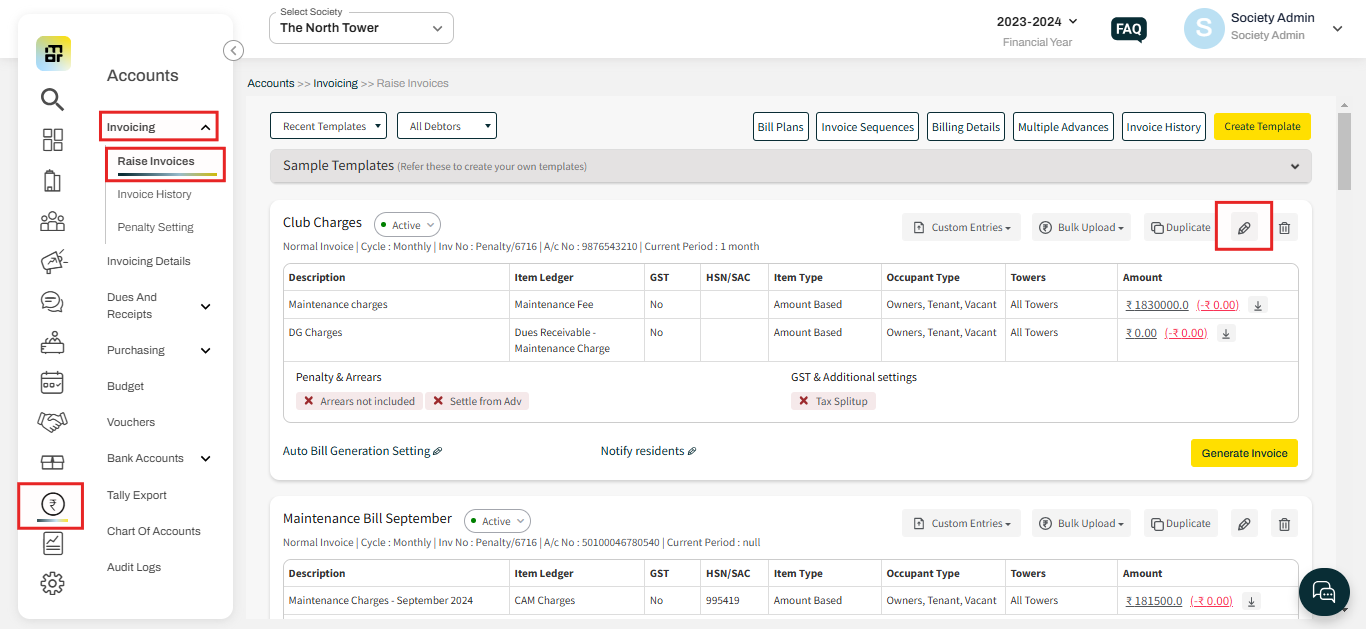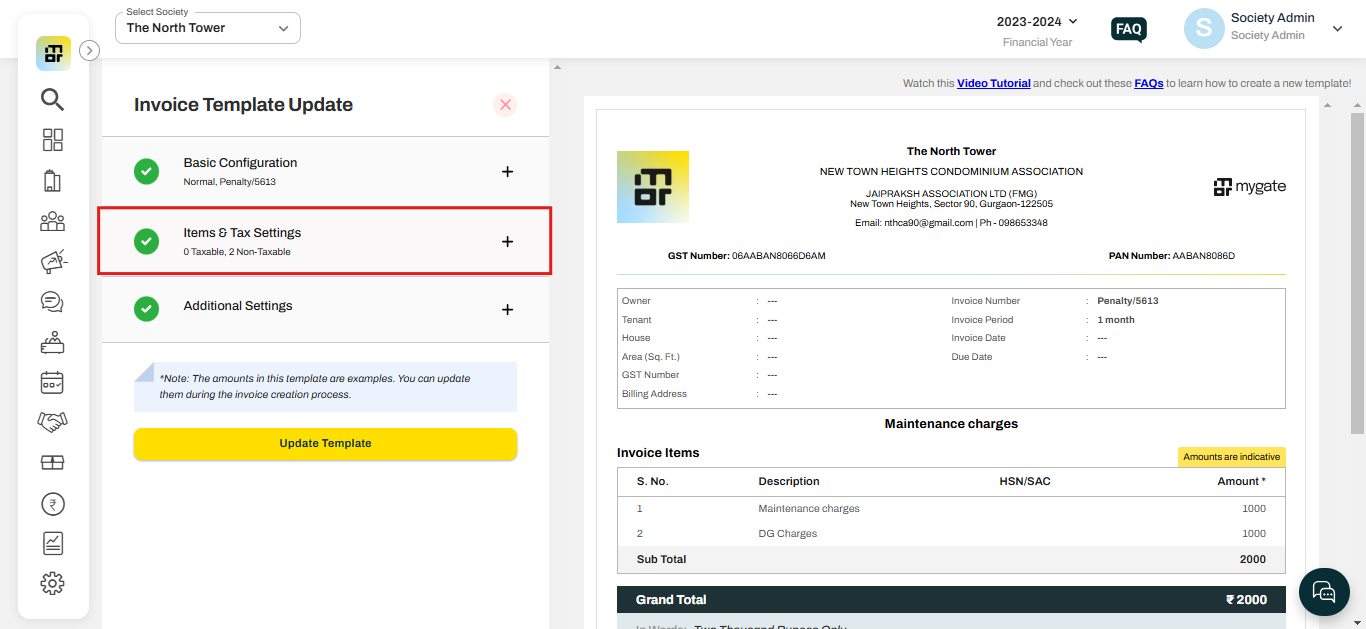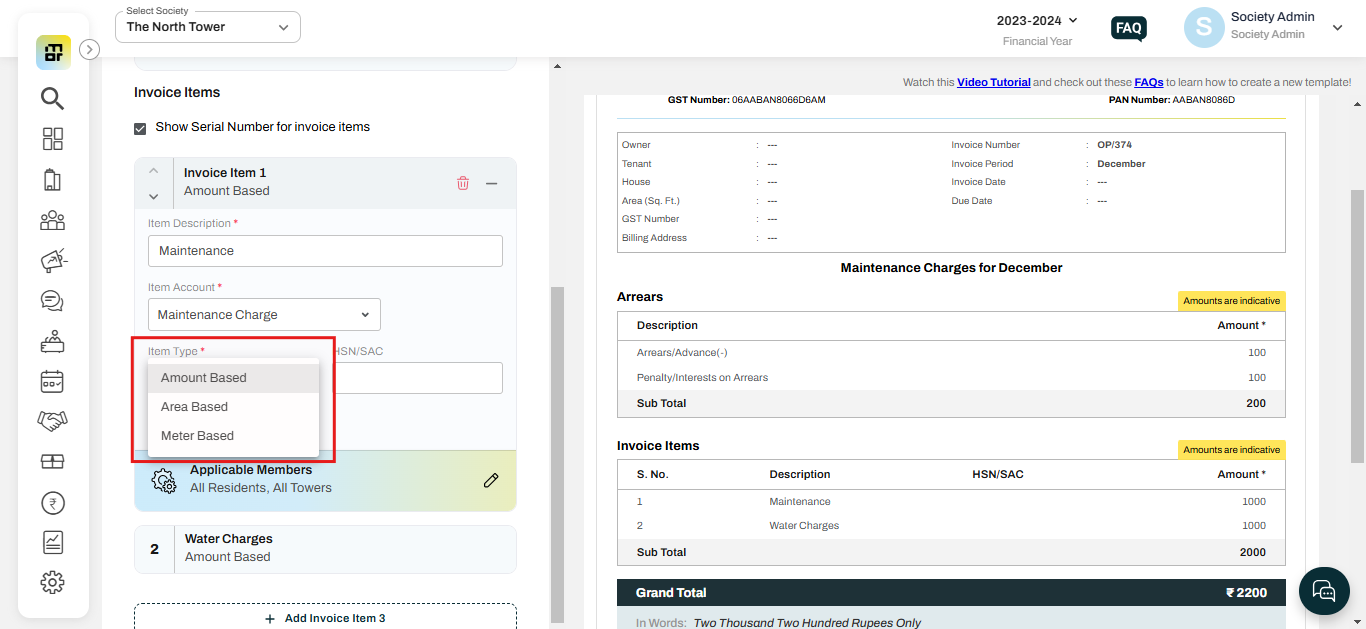How to configure invoice item type and what is the difference between Item types such as Amount-based, Area-based and Meter-based, in an invoice template?
In Mygate, when creating an invoice template, admins can choose from three different item types to suit the society's billing structure: Amount-based, Area-based, and Meter-based. Each category is designed to handle specific billing requirements, offering flexibility in how charges are calculated and applied to residents
Please follow the steps below to configure the Item type for an invoice item.
1. Go to the "Raise invoices" option under the invoicing section of the Accounts tab, and click on the Pencil Icon against the template that you wish to edit.
2. Click on the "Items & Tax Settings" tab.
3. Click on the Invoice Item, you can select the item type as Amount based, area based, or meter based.
Each is designed to cater to specific billing needs. Here's how they differ:
1) Amount-Based: This type is used when the charge is a fixed amount, regardless of any other variables. It's straightforward and typically used for items like fixed maintenance fees, one-time charges, or other standard services.
Example: If the admin wants to apply the same amount for all the flats as a monthly maintenance charge of ₹2,000.
2) Area-Based: This type is used when the charge depends on the area or size of the property. It's typically used in scenarios where billing is proportional to the square footage or area of a property.
Example: Maintenance charges are calculated at ₹5 per square foot for all the flats, so a flat having an area of 1000 sq ft. would pay ₹5,000 (5*1000), whereas a Flat area of 2000 sq ft will pay ₹10,000 (5 * 2000)
3) Meter-Based: This type is used when the charge is based on consumption measured by a meter, such as electricity, water, or gas usage. It allows billing according to the actual consumption recorded by a meter.
Calculation happens based on (Current Reading - Last Reading) * per unit charges.
Example: Electricity charges are based on the number of units consumed at a rate of ₹7 per unit.
Each of these item types provides flexibility in how charges are calculated and presented on the invoice, allowing for more accurate and transparent billing.



